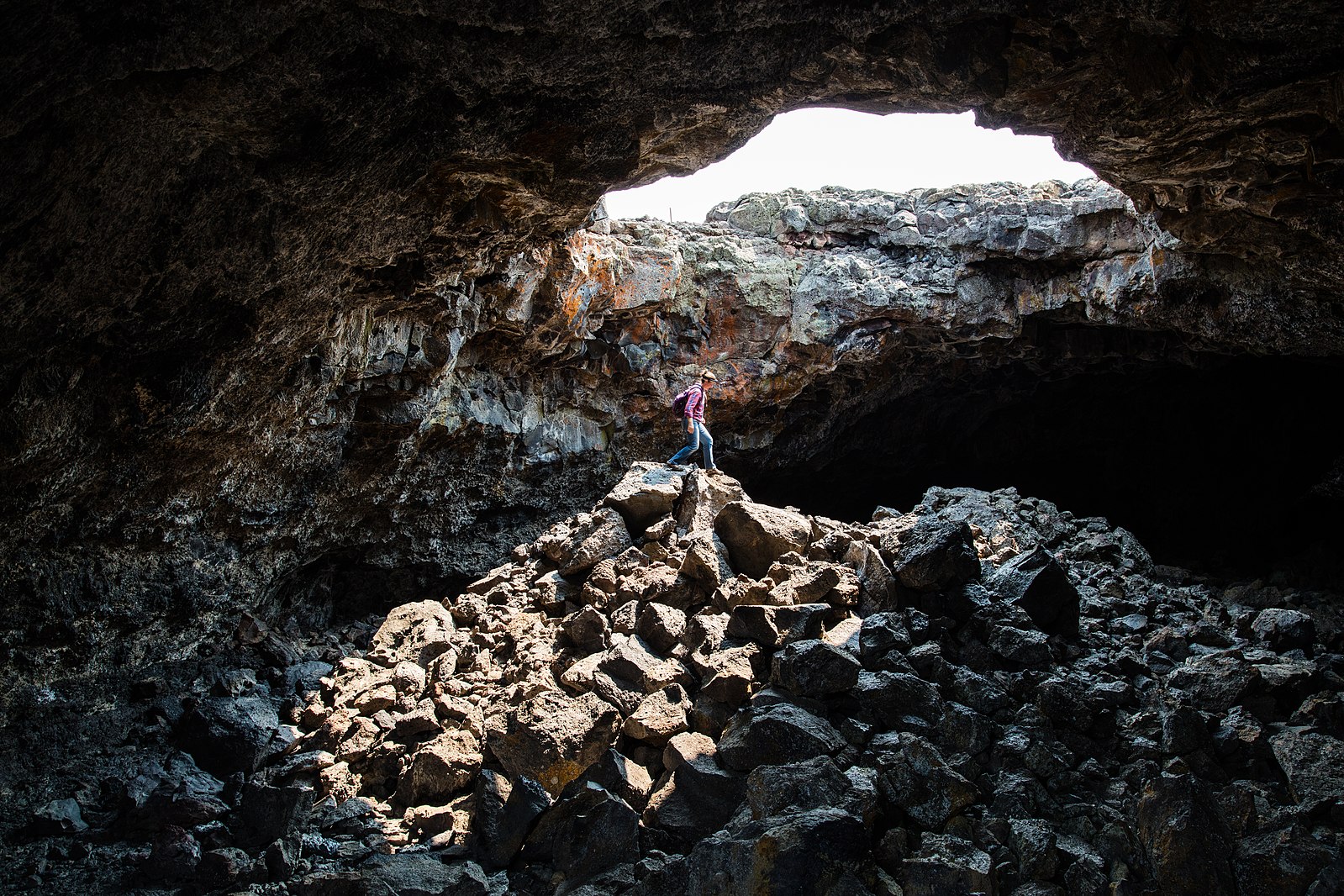Idaho is known for its diverse nature, but did you know volcanoes erupted here years ago creating some of the most unique landscapes in the United States? Lava tubes are the result of volcanic eruptions, where the low pressure lava developed a thick, hard crust. This crust cooled and formed a roof above the flowing lava stream. When the eruption ended, the lava flowed out of the tube to empty it. This left the outer crust layer intack. Continue reading to discover the largest and most interesting lava tubes to explore in Idaho.
Shoshone

Shoshone Indian Ice Cave is one of Southern Idaho’s largest attractions because it is a huge lava tube, frozen with ice! It remains freezing temperatures year round, even on the hottest day of summer. Geologists call this cave one of Earth’s natural wonders. The ice cave is only accessible with a trained guide. The guide service runs every 30 minutes and does not have to be reserved prior. The guide will tell you all about the history of the caves, it is extremely interesting to learn! A short drive from here is Idaho’s Mammoth Cave. The Mammoth Cave is the largest volcanic cave in the world that is open to the public to explore. This is a self guided tour cave, but they have lanterns for visitors to explore this wonder.
Craters of the Moon

The famous, Crates of the Moon National Monument and Preserve is a large lava flow field that sports lava tubes, inferno cones, tree molds, and other insane features! Hike the Caves Trail to discover the four most popular caves; Indian Tunnel, Dew Drop Cave, Beauty Cave, and Boy Scout Cave. One of the most picturesque of these is Indian Tunnel. There are stairs leading down into the cave, making it easy to navigate to the bottom and walk through. The other caves are more bouldered areas that require climbing and crawling.
Broken Top Loop Trail also leads to a cave called Buffalo Cave which is a very tight entrance and can be difficult to maneuver. All of these require head lamps except for Indian Tunnel as it is mostly lit from collapses in the high ceilings, providing natural light to illuminate the cave. Before entering these caves you must be sure to wear shoes that have not been in other caves, or have had a thorough washing since. White-nose syndrome can be passed this way, and is deadly to the local bats living at Craters.
*2021 Due to seismic activity north of the park, the caves are temporarily closed until further notice. check with the visitor center for most recent updates: 208-527-1300.
Jerome/Eden

The Clay Cave is another cave that requires a high clearance vehicle, or some nice hiking shoes! We suggest parking just off of Highway 25, and walking two miles to the cave. Others ATV in on the muddy and bumpy road. The Clay Cave is said to be more than a mile long! The first 100 yards are lit up from the opening at the entrance to the cave. If exploring is done deeper than this, headlamps and flashlights are required. Some have gotten lost deep within, so please come prepared!
Bliss

North of Bliss are rolling hills and lava tunnels. Some of the tunnels are so long you can’t see to the end, but others have many openings to walk in and out as you please. Bring a head lamp and sturdy shoes because parts of the lava tubes are crawl spaces, and others open up to arches acting as natural bridges to cross the collapsed lava. None of these caves are marked, so bring a buddy and keep track of where you are located because it is easy to get lost!
Gooding

North of Gooding holds many secret lava tunnels only a few locals have stumbled upon. There are two popular caves accessible with high clearance vehicles, Dead Horse Cave and Tea Kettle Cave. Dead Horse Cave has steps leading right into the entrance, then, opens up into a large spacious area.
The most iconic lava tunnel is Tea Kettle Cave, located just a short drive from Dead Horse Cave. The name comes from its shape; the spout of the tea kettle is the entrance, and the lid is open to the sky above. Climb down through the spout to enter the cave. It is a slippery slope, and can be extremely dark so we suggest bringing a head lamp. At the base of the cave, a pile of rocks has ferns growing all around. There is a dirt path that leads to the top of the rock pile on the north side to assure you do not disrupt the growing plants. It is not allowed to climb up the side where the ferns are because we don’t want to disrupt their bloom due to tourism. Watch out for rattle snakes during the summer
Enjoy exploring the volcanic landscapes of Southern Idaho!

